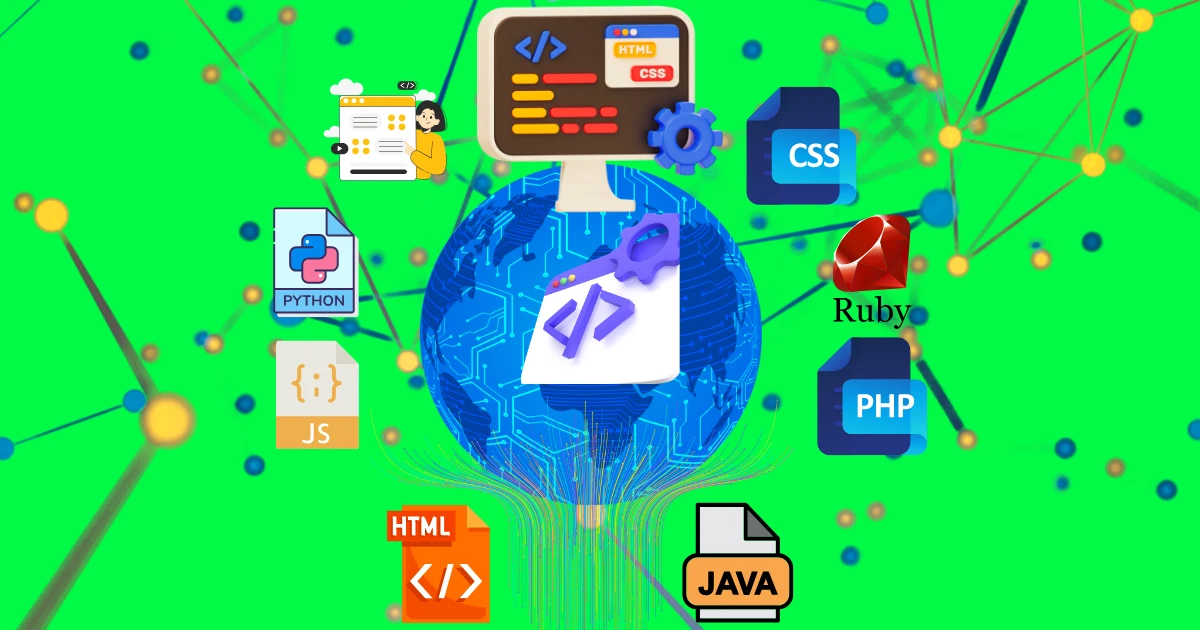In the fast-paced world of web development, staying ahead of the curve is crucial for success. Whether you’re a novice developer just starting your journey or an experienced professional looking to upgrade your skills, understanding the essential technologies used in web development is key to building powerful, scalable, and user-friendly websites. In this blog, we’ll explore the core technologies that every web developer should be familiar with to create modern and efficient websites.
Why Web Development is Crucial in Today’s Digital Age
Web development is the backbone of the digital world. Every time you visit a website, you’re experiencing the results of a well-executed web development process. As businesses and individuals continue to shift online, the demand for skilled web developers is higher than ever. Websites are no longer just digital brochures; they have become interactive, dynamic platforms with sophisticated functionalities. From e-commerce platforms to blogs, social media sites to online education portals, web development impacts almost every aspect of our daily lives.
Whether you’re interested in building a personal project, creating a business website, or launching an enterprise application, understanding the fundamental technologies that drive web development is essential. These technologies provide the foundation for creating interactive and responsive websites that function seamlessly across all devices.
Core Technologies Every Developer Should Master
To become a proficient web developer, it’s essential to have a solid grasp of both front-end and back-end technologies. Web development is typically divided into two primary areas:
- Frontend Development (Client-side): This refers to everything users interact with directly in the browser. It involves the visual elements, layout, design, and functionality of a website.
- Backend Development (Server-side): This focuses on what happens behind the scenes. It involves the server, databases, and server-side logic that powers the website’s functionality.
Let’s break down the most essential technologies for both frontend and backend development.
1. Frontend Technologies
Frontend development is all about creating the visual components of a website that users interact with. The following tools and technologies are integral to every frontend developer’s toolkit:
HTML (HyperText Markup Language)
HTML is the foundation of every webpage. It provides the structure of a website and defines the various elements like headings, paragraphs, links, images, and more. HTML5, the latest version of the language, introduced new features such as native audio/video support, APIs, and semantic tags that improve accessibility and SEO.
CSS (Cascading Style Sheets)
CSS is used to style the visual presentation of a website. It controls the layout, colors, fonts, and responsiveness of a webpage. With CSS3, developers gained powerful features like animations, transitions, and grid systems that allow them to create visually stunning websites. Responsive design using media queries ensures that websites look great on all devices, from desktops to smartphones.
JavaScript
JavaScript is the scripting language that adds interactivity and dynamic functionality to websites. It allows developers to create interactive elements like sliders, form validation, image galleries, and real-time content updates without refreshing the page. JavaScript is also used to enhance user experience and perform client-side logic, making it a must-have skill for any web developer.
Popular JavaScript Frameworks and Libraries
To simplify development, developers often use JavaScript frameworks and libraries like:
- React.js: A powerful JavaScript library for building user interfaces. React allows developers to create dynamic, single-page applications (SPAs) with reusable components, making it easier to manage complex user interfaces.
- Vue.js: A progressive JavaScript framework that is simple to integrate into projects. Vue.js offers features like data binding and component-based architecture, making it a favorite for developers looking for an easy-to-use tool for creating interactive interfaces.
- Angular: A comprehensive framework developed by Google, Angular is used for building large-scale web applications with features like two-way data binding and dependency injection.
2. Backend Technologies
While the frontend is focused on the user interface, the backend involves server-side development, databases, and logic that ensures the smooth functioning of a website. Here are the essential backend technologies you should know:
Programming Languages
Several programming languages are used for backend development. Some of the most popular include:
- JavaScript (Node.js): With Node.js, JavaScript can now be used for backend development. It allows developers to use the same language on both the client and server sides, making full-stack development more seamless. Node.js is fast and scalable, which is why it is a popular choice for building high-performance applications.
- Python: Python is a versatile and easy-to-learn language often used for backend web development. Frameworks like Django and Flask are built with Python and offer powerful tools for developing web applications quickly and efficiently.
- Ruby: Ruby on Rails (RoR) is a popular backend framework for rapid application development. Ruby is known for its simplicity and elegant syntax, and it remains a top choice for startups and developers who want to build websites with minimal hassle.
- PHP: PHP has been around for decades and powers popular platforms like WordPress and Facebook. It remains one of the most widely-used backend languages for web development due to its simplicity, efficiency, and support for a variety of frameworks like Laravel and Symfony.
Databases
Databases are crucial for storing and managing data on the server side. Web developers need to be familiar with both relational and non-relational databases:
- SQL Databases (MySQL, PostgreSQL): Structured Query Language (SQL) databases are used for storing data in tables with predefined relationships. MySQL and PostgreSQL are two of the most widely-used relational databases.
- NoSQL Databases (MongoDB, Firebase): NoSQL databases offer flexibility by allowing data to be stored in a variety of formats, including key-value pairs, graphs, or documents. MongoDB is a popular NoSQL database used for scalable, high-performance applications.
Web Servers
A web server is responsible for delivering web pages to users’ browsers. Common web servers include:
- Apache: One of the most popular web servers, Apache is open-source and highly customizable.
- Nginx: Known for its speed and ability to handle large traffic volumes, Nginx is often used as a reverse proxy server or load balancer.
APIs (Application Programming Interfaces)
APIs allow different systems to communicate with each other. RESTful APIs (Representational State Transfer) and GraphQL are commonly used to retrieve data from the server and display it on the front-end.
3. Full-Stack Development: Combining Frontend and Backend
A full-stack developer is proficient in both frontend and backend development. Full-stack development frameworks like MERN (MongoDB, Express.js, React, Node.js) and MEAN (MongoDB, Express.js, Angular, Node.js) are gaining popularity for building end-to-end applications. Full-stack developers are able to manage both the client-side and server-side of web development, making them highly versatile in the field.
4. Version Control and Collaboration Tools
As a web developer, you’ll need to manage and track changes in your codebase, especially when working on larger projects or with teams. Version control systems like Git and platforms like GitHub and GitLab are essential for collaborative development, allowing developers to track revisions, resolve conflicts, and maintain a history of changes made to the codebase.
5. Web Development Best Practices
While mastering the core technologies is essential, web development best practices are equally important to ensure clean, efficient, and maintainable code. Some key best practices include:
- Responsive Design: Ensuring that websites are accessible on all screen sizes.
- Cross-Browser Compatibility: Testing websites across multiple browsers to ensure a consistent user experience.
- Performance Optimization: Compressing images, minifying code, and using content delivery networks (CDNs) to reduce loading times and improve website speed.
- Security: Implementing secure coding practices to protect against threats like SQL injection, cross-site scripting (XSS), and cross-site request forgery (CSRF).
Summary
The world of web development is vast, and staying up-to-date with the essential technologies is crucial to building modern, efficient, and user-friendly websites. Mastering the core frontend technologies like HTML, CSS, and JavaScript, along with backend technologies like Python, Node.js, and databases, will give you the skills you need to excel in this field.
Whether you’re a beginner or a seasoned pro, investing time in learning these technologies and understanding how they work together will open up endless opportunities in the world of web development. By continually refining your skills, you’ll be able to build powerful websites and applications that meet the needs of modern users while contributing to the digital landscape.
Happy coding!


